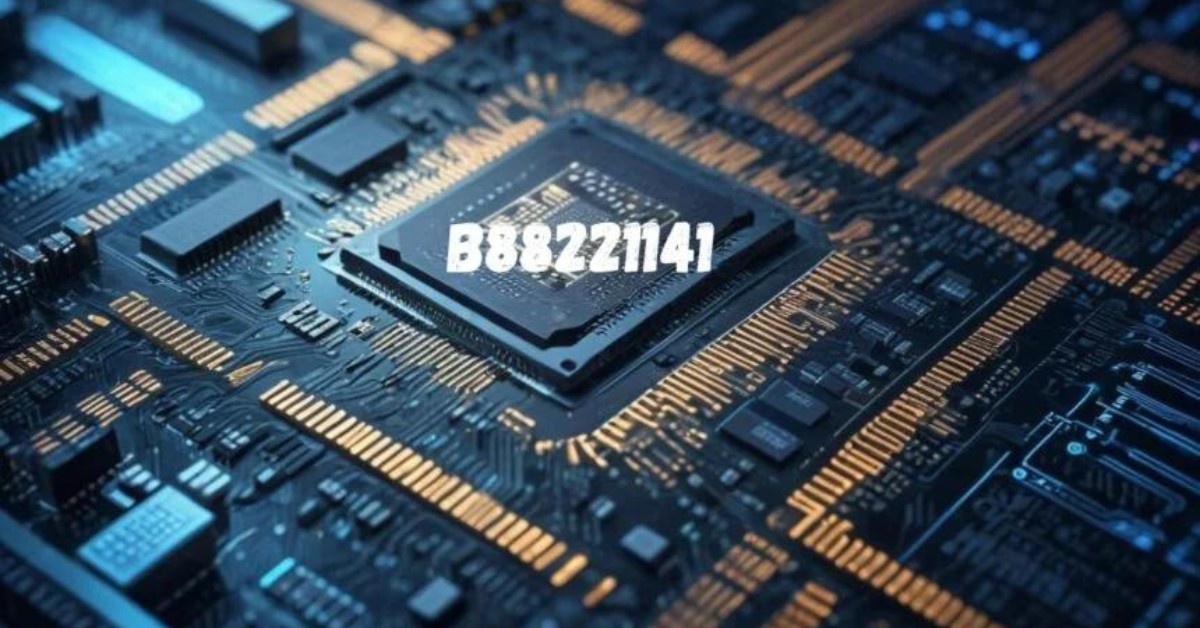In the ever-evolving landscape of technology and industry, new codes and systems frequently emerge, each with its own unique set of functionalities and implications. One such code that has recently captured attention is B88221141. While it may appear cryptic at first glance, this alphanumeric code holds a wealth of information and potential. In this article, we will explore what B88221141 is, its historical context, essential features, and the myriad benefits it offers across various sectors.
What is B88221141?
B88221141 is an alphanumeric code that represents a specific component, technology, or system within a broader industry. It might be used to identify a product, a standard, or a piece of technology. While the code itself might seem abstract, understanding its implications can offer valuable insights into its significance.
Possible Interpretations
Product Code: B88221141 could be a unique identifier for a product, possibly within the technology or manufacturing sectors.
Standard or Regulation: It might represent a specific standard or regulation that organizations need to comply with.
Technology Component: The code could refer to a particular technology component or system, such as a software version or hardware part.
To fully grasp what B88221141 entails, it’s essential to explore its historical context and the industries where it plays a role.
Historical Context
Understanding the historical context of B88221141 involves delving into the development and evolution of the system or technology it represents. This code might be part of a long-standing tradition or a recent innovation. Here, we will trace its origins and development.
Origins
Early Beginnings: The roots of B88221141 might lie in early technological advancements or industry standards. It could have been introduced as part of a larger initiative to standardize processes or improve efficiency.
Evolution: Over time, B88221141 may have undergone changes to adapt to new technologies or industry needs. Tracking these changes can provide insight into its current relevance and application.
Development Milestones
Key Developments: Significant milestones in the development of B88221141 might include updates to technology, changes in industry regulations, or major shifts in market demand.
Adoption and Impact: Understanding how B88221141 has been adopted across different sectors and its impact on industry practices is crucial for appreciating its significance.
Essential Features of B88221141
B88221141 encompasses several features that make it a valuable component in its respective field. These features can vary depending on the specific context in which the code is used. Here, we will outline the general characteristics that are often associated with such codes.
Functionality
Core Functions: The core functionality of B88221141 might include specific tasks or operations essential for its application. For example, if it’s a product code, it could denote a device or software with particular capabilities.
Integration: How B88221141 integrates with other systems or technologies can significantly impact its effectiveness and utility.
Benefits
Efficiency: One of the primary benefits of B88221141 could be its ability to streamline processes and improve efficiency in its application.
Innovation: If B88221141 represents a new technology or standard, it might drive innovation and provide a competitive edge in the market.
Compliance and Standards
Regulatory Compliance: In some cases, B88221141 may be associated with regulatory compliance or industry standards, ensuring that products or systems meet specific criteria.
Quality Assurance: The code might be linked to quality assurance processes, guaranteeing that certain benchmarks are met.
Benefits Across Various Sectors
B88221141’s impact extends across multiple sectors, each benefiting in unique ways from its application. Here, we explore how different industries leverage the advantages of B8822114’1.
Technology Sector
Innovation: In the technology sector, B88221141 might represent cutting-edge innovations that drive progress and create new opportunities.
Compatibility: Ensuring compatibility with existing systems and technologies can enhance the effectiveness of B8822114’1.
Manufacturing
Standardization: B8822114’1 could be part of a broader effort to standardize manufacturing processes, leading to increased efficiency and consistency.
Product Development: As a product code, B8822114’1 might play a role in the development and quality control of new products.
Healthcare
Regulatory Compliance: In healthcare, B8822114’1 might be associated with standards and regulations, ensuring that medical devices or systems meet safety and efficacy criteria.
Improved Outcomes: The code could contribute to better outcomes through enhanced technology or standardized practices.
Business and Industry
Competitive Advantage: Businesses adopting B8822114’1 might gain a competitive edge through improved processes, technology, or compliance with industry standards.
Operational Efficiency: Streamlining operations and integrating new technologies can lead to significant improvements in efficiency and effectiveness.
Conclusion
B8822114’1 might seem like a cryptic alphanumeric code at first, but it holds a wealth of information and potential across various industries. By understanding its origins, essential features, and benefits, we can appreciate the role it plays in modern technology and industry. Whether you’re a business owner looking to innovate or someone interested in contemporary trends, exploring B8822114’1 provides valuable insights into how specific codes and standards drive progress and create opportunities.
As industries continue to evolve and technology advances, staying informed about key components like B8822114’1 can give you a competitive edge and help you navigate the complexities of the modern landscape.

